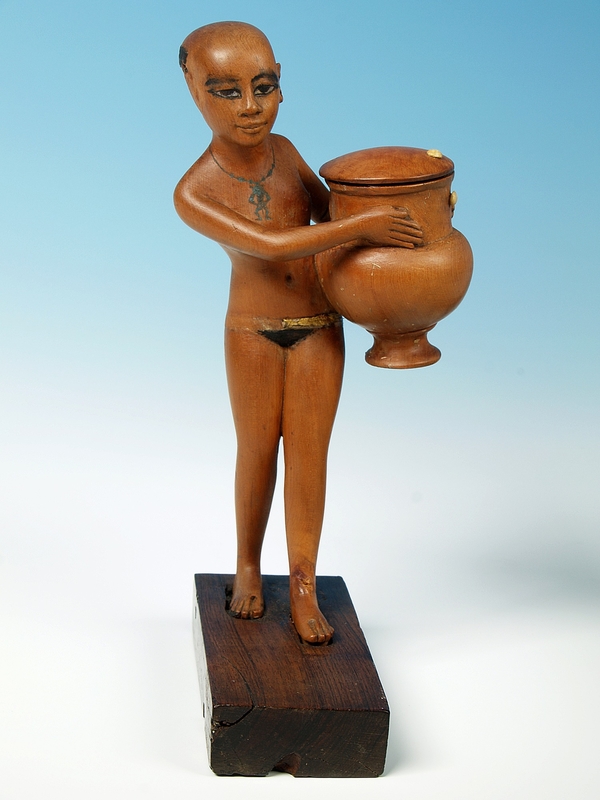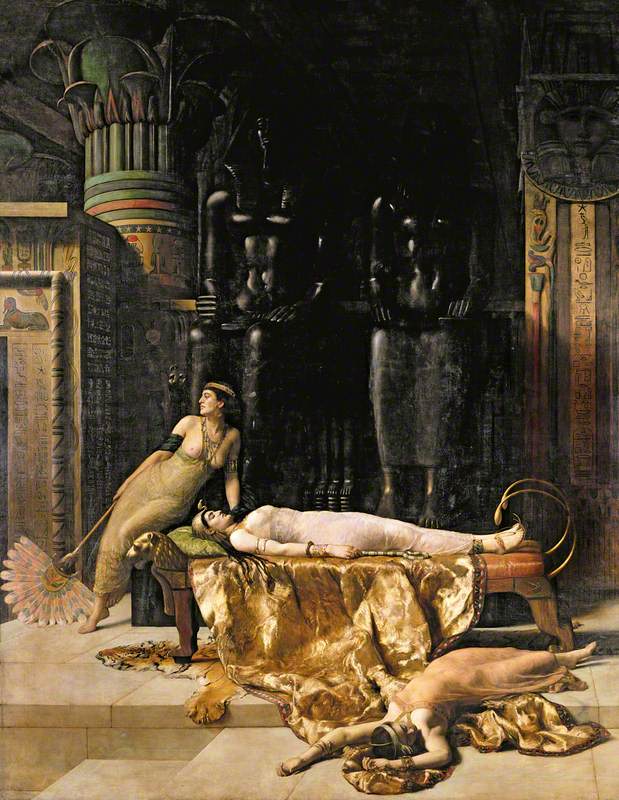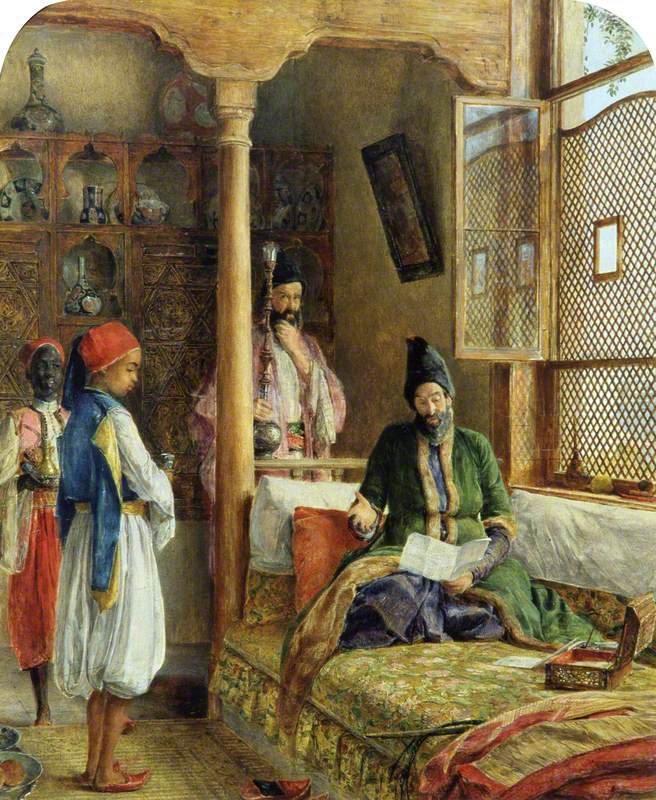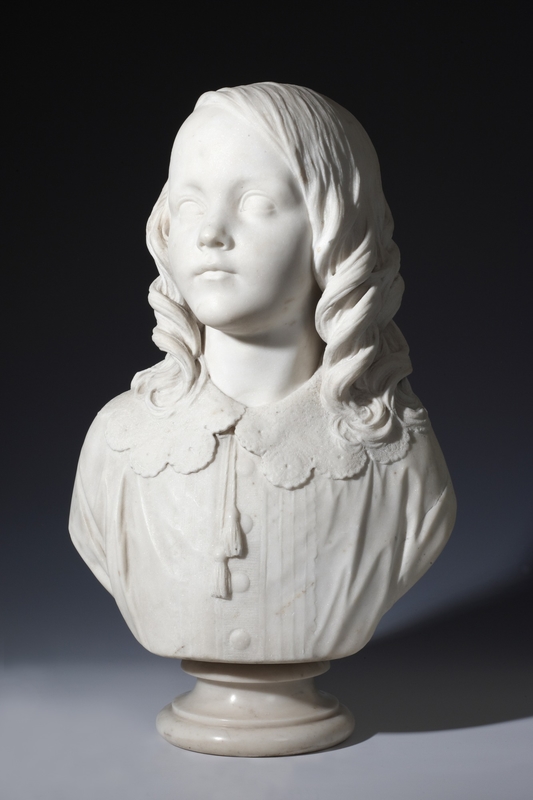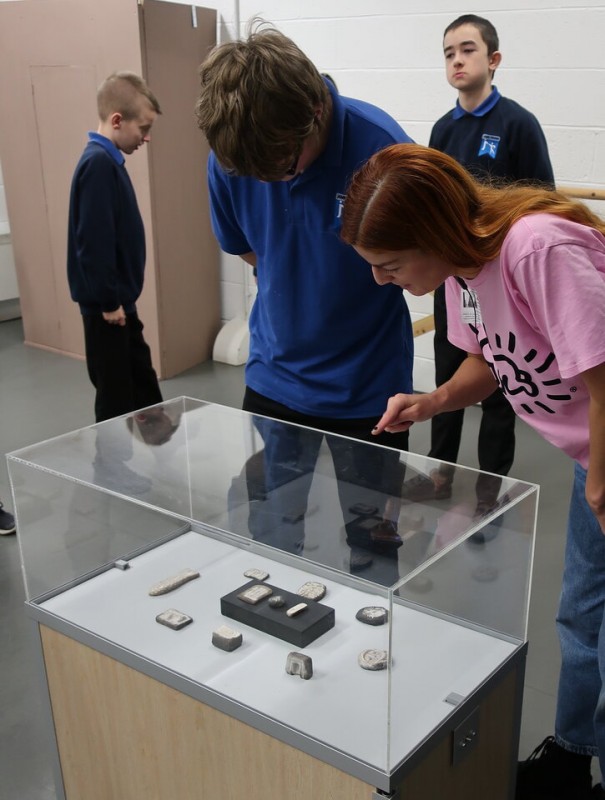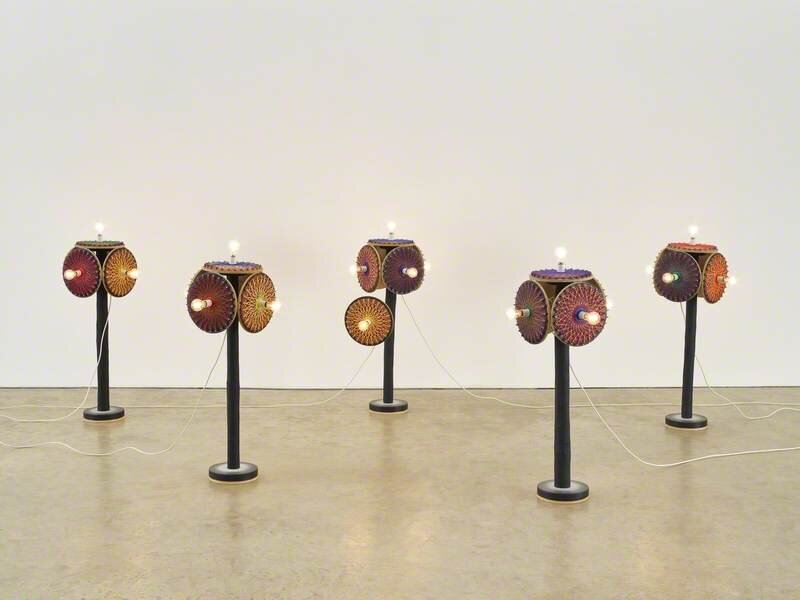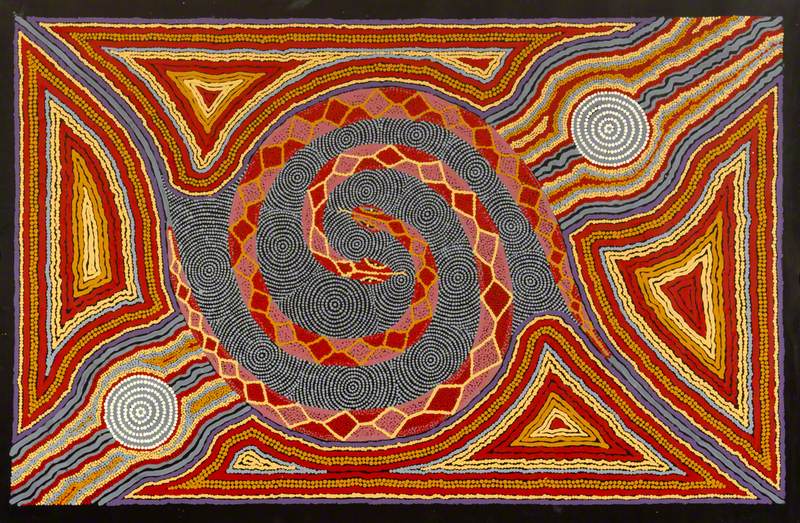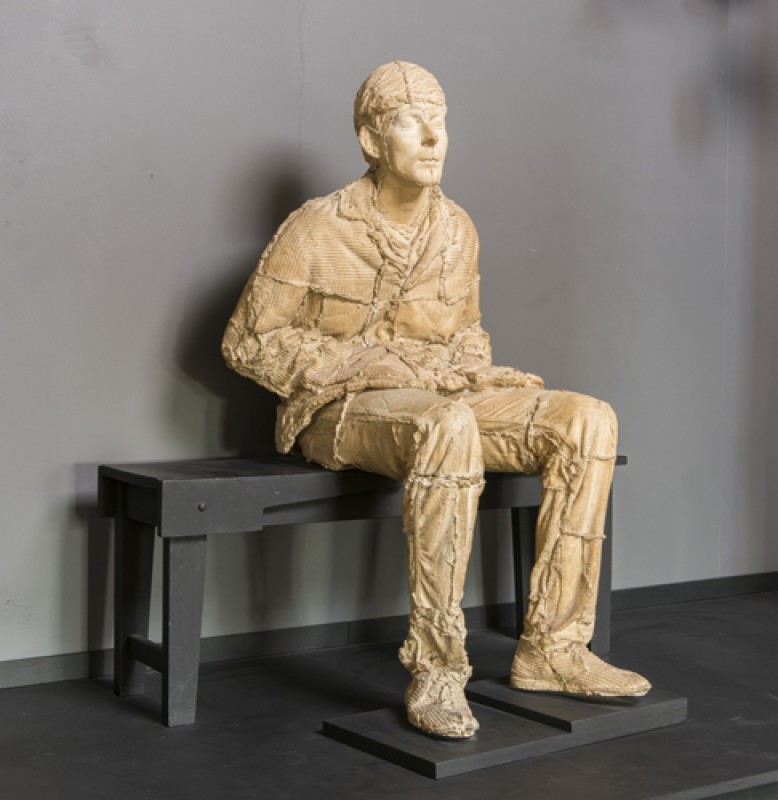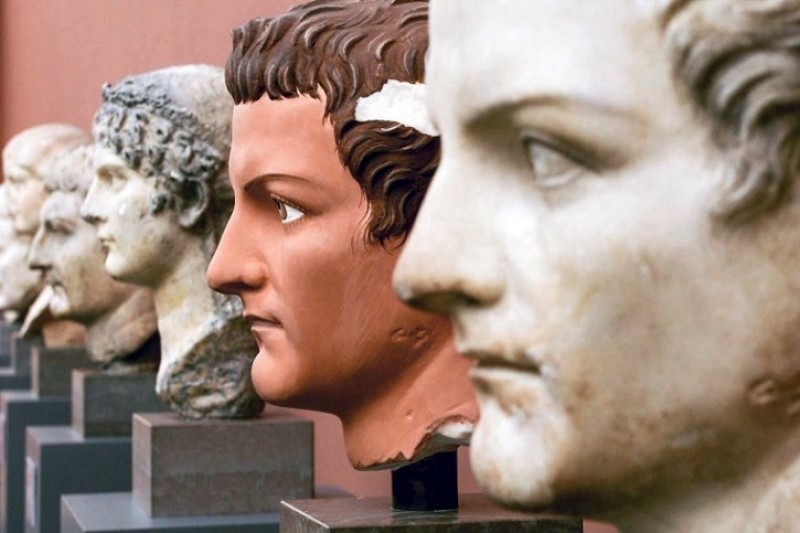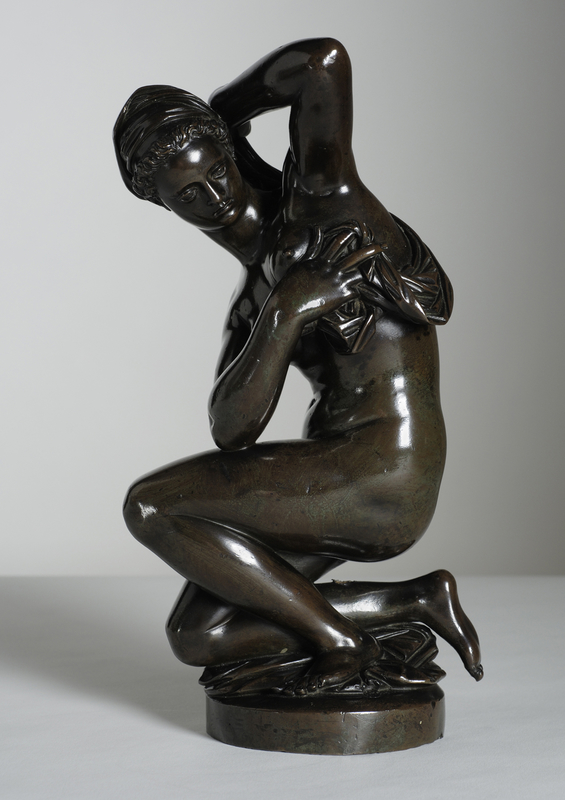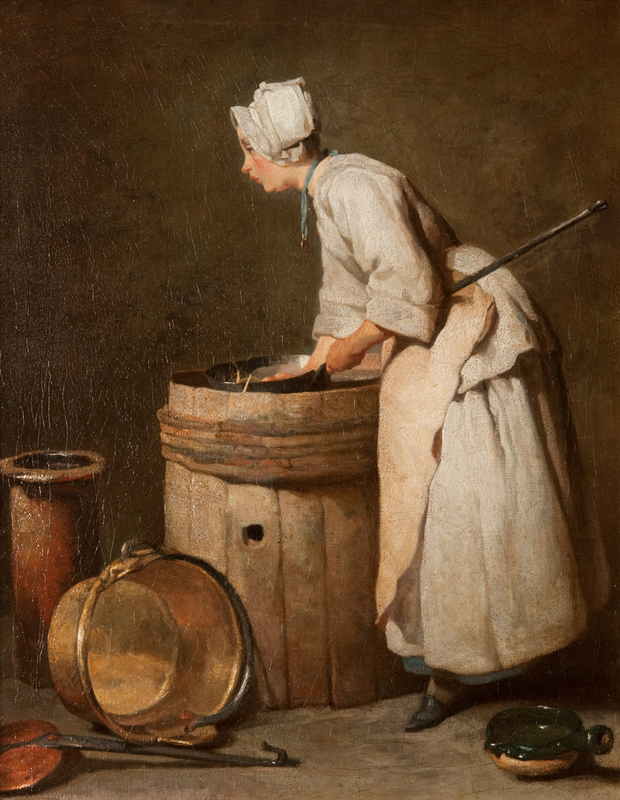Servant Girl Carrying a Jar
This four-minute audio clip describes the sculpture Servant Girl Carrying a Jar by an unknown artist (c.1360 BC).
Full audio description text
This delicately carved wooden statuette of a teenage girl carrying a heavy jar was created in Ancient Egypt around the year 1360 BC, over 3,300 years ago.
It's displayed alone in the centre of the Thacker Gallery of Ancient Egypt at the Oriental Museum of Durham University. It has a specially created, fully transparent, cylindrical case. This might seem rather strange for a sculpture that's only 15 cm high, but it's one of the most important works in the museum.
Around 5,000 years ago, when Egypt first united as a single kingdom, a distinctive artistic style developed that continued in use for more than 3,000 years until Roman times. At its heart were conventions for the depiction of the human form, both in two and three dimensions. Figures of women or girls were to sit or stand upright, facing forwards, with feet together and arms by their sides: a distinctive style which is instantly recognisable today. What makes this statuette so special is that it breaks all of those rules.
The girl's body twists and curves in a natural pose under the weight of the round, lidded jar that she carries on her left hip. Delicately carved in boxwood, the piece is largely unpainted, allowing the warm glow of the polished golden-brown wood to form her skin. Her left leg is forward as if she is mid-walk. She twists at the waist to support the weight of the vessel, and then again at the shoulders so that her right hand can clasp the neck of the jar at the front while her left clutches the back. The container is likely very heavy. Her head, which tilts slightly towards her right shoulder, is bald, and her right ear is absent having never been carved.
Holes and dark residue on the side of her head suggest she may once have worn a wig, carved as a separate piece and now lost, explaining her current appearance. Her nose and mouth are lightly carved from the wood, while her large eyes and bold eyebrows are painted in black and white, making them strongly stand out. She's almost naked apart from a simple golden girdle at her waist and a black painted necklace with a pendant depicting the dwarf god Bes. This appearance suggests she is a servant for a wealthy family.
The sculpture was created during a short period of time between around 1390 to the 1330s BC when Egypt was at the height of its empire. Wealth poured into the capital city and Egyptian artists experimented with breaking away from traditions. Within a couple of generations, this radical activity had ended and the status quo was revived. Much of the experimental art was deliberately destroyed. Only chance has preserved a small number of these pieces to the modern day.
The sculpture had a functional purpose. The lid for the pot the girl carries opens thanks to a small ivory pin on one side. The container would once have held coal for eye makeup, which was used by both men and women. Though the figure is depicted in servitude, the piece is now a powerful symbol of the creativity and talent of an unknown artist living more than 3,000 years ago. It's one of the finest surviving examples of a progressive artistic period in Ancient Egyptian history.
Art UK and VocalEyes
This audio description was created by VocalEyes for Art UK Sculpture, a national project to document and increase access to the UK's publicly owned sculpture. This description is one of 25 representing sculpture collections across the UK.
